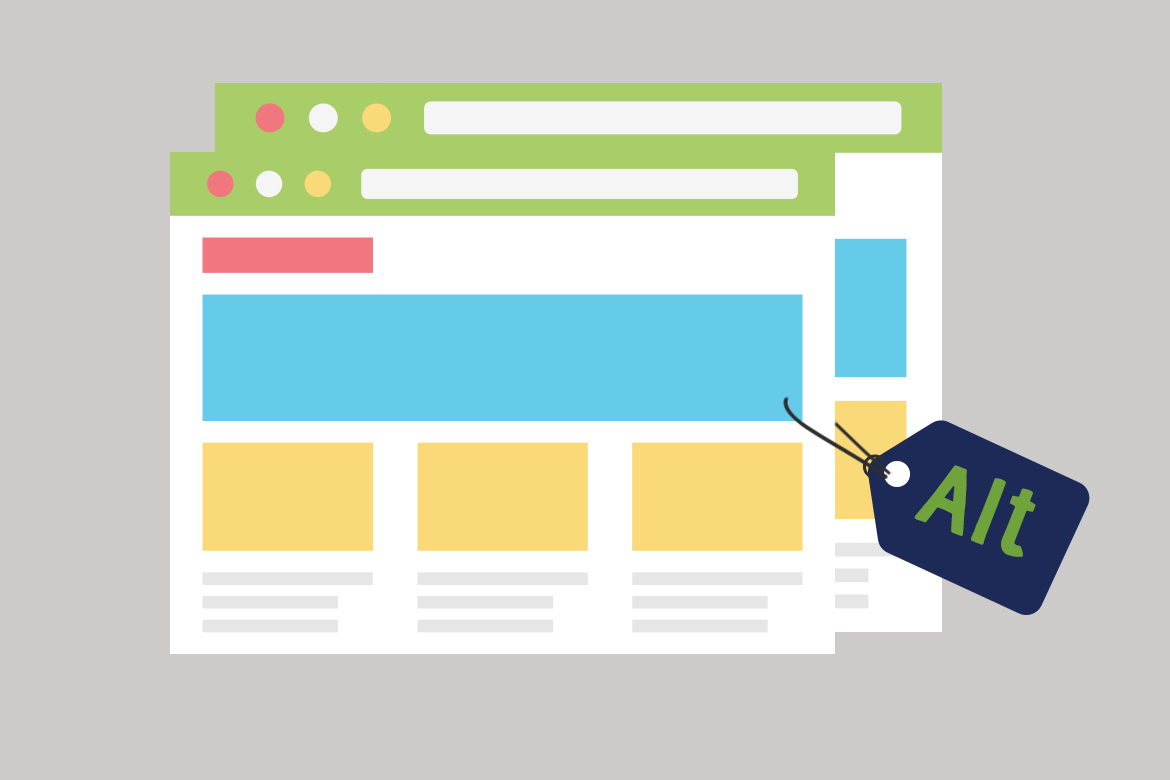Alt text, also known as alternative text, is a simple description of an image on a page. And to sum it up in one go; the best way to use alt text, is to describe the image as accurately as you can and as simply as you can.
Alt text can also be known as:
- Alt attributes
- Alt descriptions
- Alt tags (technical description)
All of these mean pretty much the same thing, it’s just that all or any of these terms can be bandied about when discussing Alt text.
Why you need to be clued up when it comes to Alt Text
Alt text is used within HTML code to outline the appearance and function of an image and is primarily used as follows:
- For search engine ‘crawlers’ – Alt text is the method by which search engines (such as Google) interpret the content of a displayed image. Google in particular enjoys clarity and accuracy because it helps search engine users (or crawlers) to index a page and image fully, and this is why both context and description must be precise.
- For accessibility – For search engine users who may have disabilities such as visual impairments, alt text is the bedrock of what visual aids, such as screen readers, rely on to ensure the user is able to accurately interpret what they are viewing (in precisely the same way as a sighted person can).
- When there’s a dodgy internet connection – If an image file is struggling to load, alt text will be displayed in the absence of the image, giving the user a vague idea of what they should expect to see.
Avoid over populating Alt Text
Once upon a time, alt text might have been the perfect opportunity to stuff as many keywords in to try to boost your search engine results rankings. This is absolutely not recommended, as Google does not reward those attempting to cut corners.
Alt tag is sufficient when describing a very specific image but otherwise, the only strategy we recommend when considering use of alt text is to maintain clear and simple descriptions of exactly what the user is seeing. It is the only way to stay relevant and high ranking within search engine listings.
Here is a direct comparison of how to effectively use alt tag (with a description of the image) versus how not to:
How will Alt Text support the visibility of my website?
Alt text isn’t just there to look clever, it serves a purpose when it comes to optimising your website. Along with optimised file naming, alt text can help to boost your overall image SEO. Whilst we don’t want to overload the amount of text we are using, be smart, because alt text does provide an opportunity for you to include selected keywords – and it will help search engines to more accurately identify exactly what you are displaying.Which means it can be win-win for you and for your target audience.
Good Alt Text tips
Here are three key considerations when deciding on your alt text:
- Describe your images specifically
- Keep to a concise description (recommendation to use under 125 characters)
- Don’t overuse keywords
And finally…
If you’d like to learn more about alt text (or anything SEO related), get in touch with The Digital Studios to talk to us about how we can help you to boost your digital marketing and SEO capabilities.




